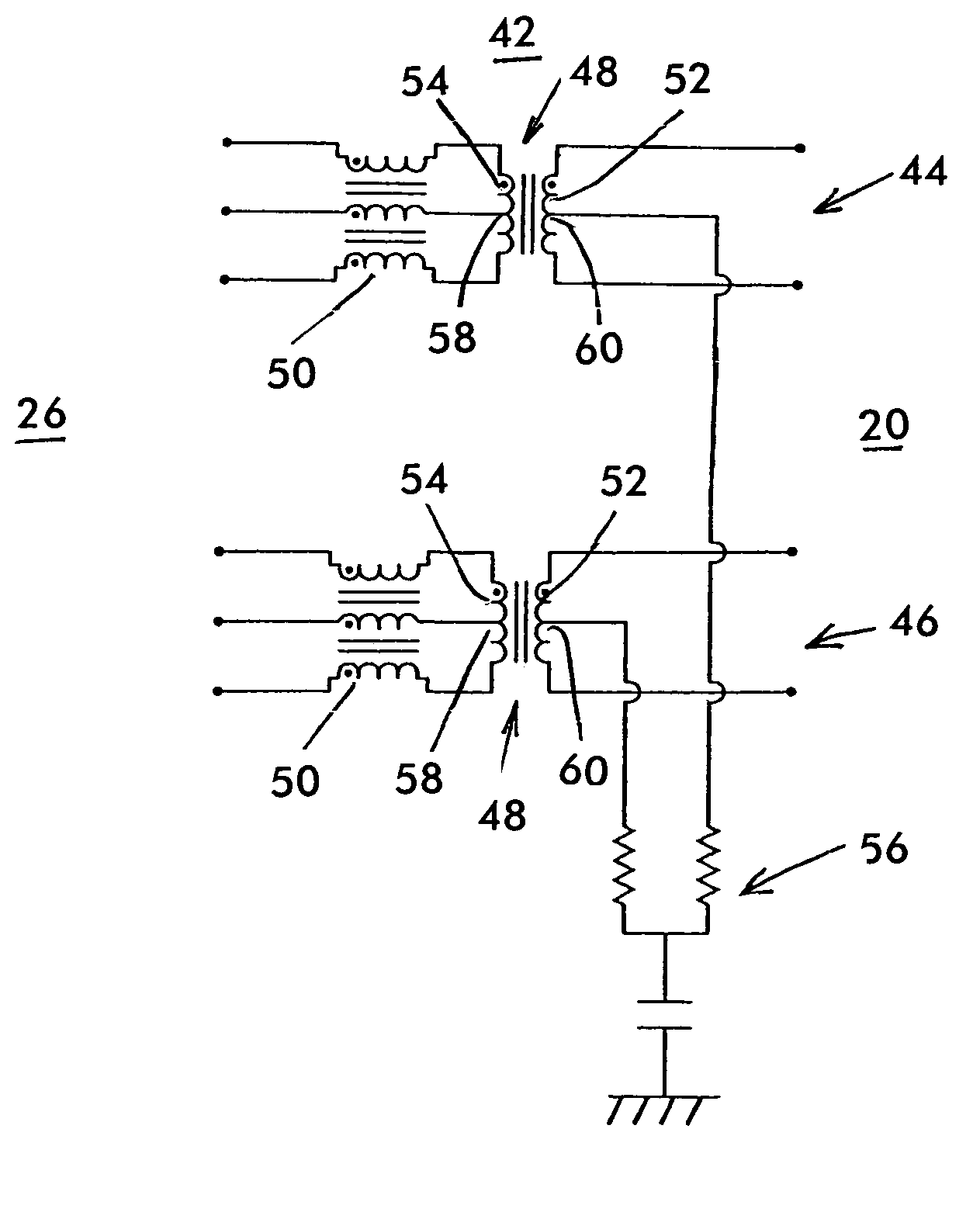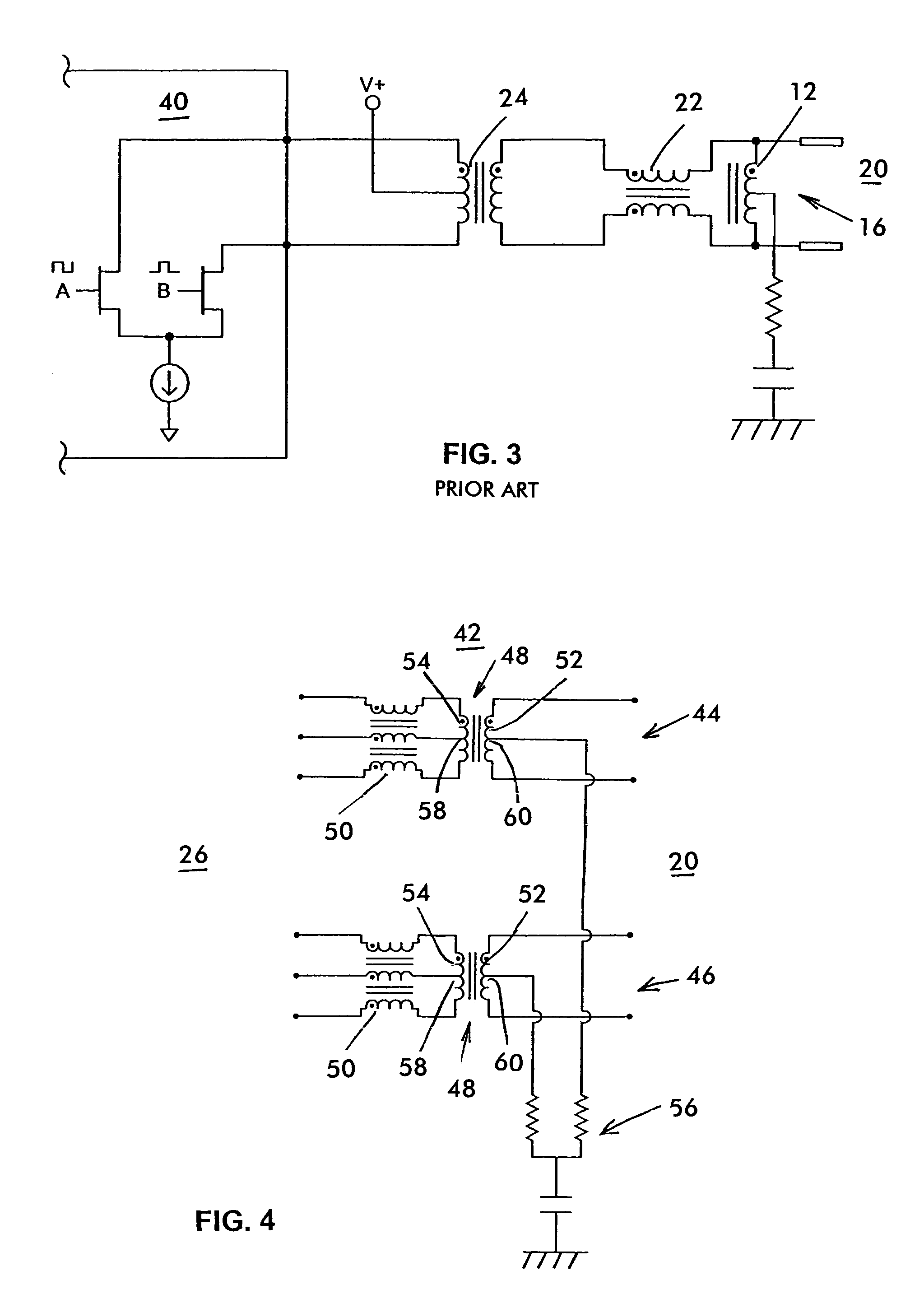LAN magnetic interface circuit
a magnetic interface circuit and circuit technology, applied in the direction of fixed transformers or mutual inductances, line-transmission details, inductances, etc., can solve the problems of high impedance to common-mode signals and noise, potential to cause emi, emi (electromagnetic interference), etc., to improve emi performance and cost.
- Summary
- Abstract
- Description
- Claims
- Application Information
AI Technical Summary
Benefits of technology
Problems solved by technology
Method used
Image
Examples
Embodiment Construction
[0032]The invention will be described in connection with its applicability to EMI suppression in magnetic interface Ethernet applications; however, the invention is not so limited and is equally applicable to other networking applications. Components having the same or similar function are designated with the same reference numerals.
[0033]FIG. 4 shows a LAN magnetic interface circuit topology 42 in accordance with certain features of the present invention. The circuit 42 includes two channels: a transmit channel 44 and a receive channel 46. Each channel is identical and includes an isolation transformer 48 and a 3-wire CMC 50 with one of the windings of the isolation transformer 48 connected to the line side 20 of the port and the 3-wire CMC 50 connected between the other winding of the isolation transformer 48 and the circuit side 26 of the channel. A termination network 56 is connected to each of the channels.
[0034]The circuit 42 is hereinafter referred to as the “3-Wire CMC embod...
PUM
| Property | Measurement | Unit |
|---|---|---|
| magnetic | aaaaa | aaaaa |
| DC voltage | aaaaa | aaaaa |
| electromagnetic interference | aaaaa | aaaaa |
Abstract
Description
Claims
Application Information
 Login to View More
Login to View More - R&D
- Intellectual Property
- Life Sciences
- Materials
- Tech Scout
- Unparalleled Data Quality
- Higher Quality Content
- 60% Fewer Hallucinations
Browse by: Latest US Patents, China's latest patents, Technical Efficacy Thesaurus, Application Domain, Technology Topic, Popular Technical Reports.
© 2025 PatSnap. All rights reserved.Legal|Privacy policy|Modern Slavery Act Transparency Statement|Sitemap|About US| Contact US: help@patsnap.com



